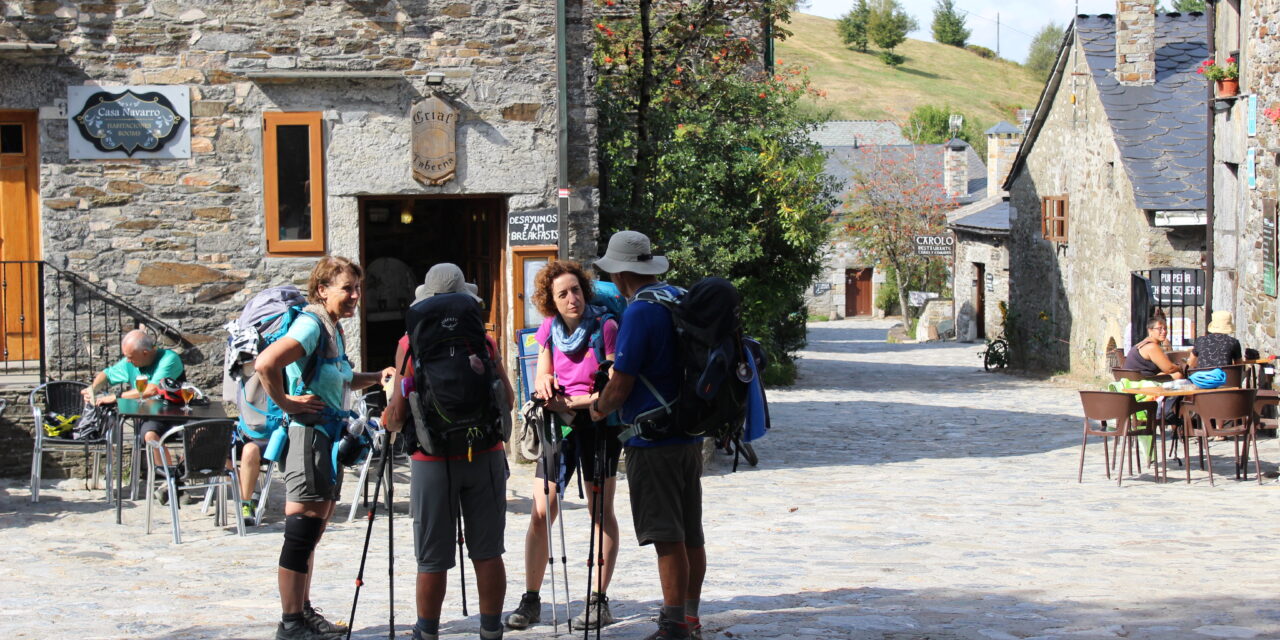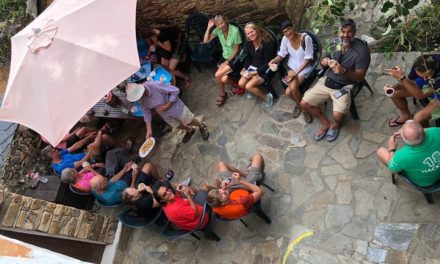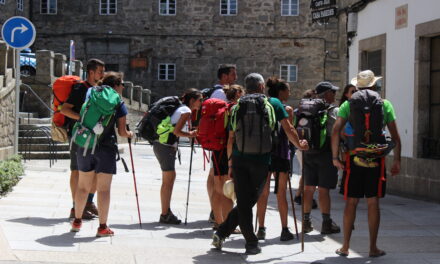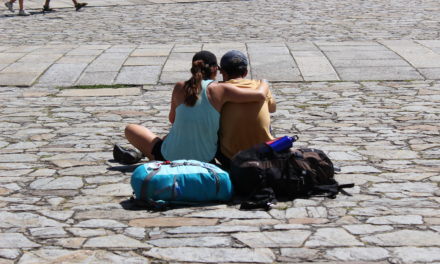O Cebreiro is today a magical place, known and loved by pilgrims from all over the world. In the past, however, its geographical location in a high mountain area, in the Galician-Leonese massif, which reaches 1,300 meters of altitude, made it an extremely fearful place, where pilgrims could remain isolated by the snow for months. However, despite such a geographical context, O Cebreiro was a possible place of passage, as the Romans understood when they laid out a route to advance towards the center of Galicia through Triacastela.
The current church of Santa María do Cebreiro is the main vestige of the long history of the place, of its origin and prominence in the pilgrimages to Compostela. It is a small sanctuary probably founded in the 11th century and always linked to the Benedictine order, originally to the French house of Aurillac and, since 1486, to the central house of the Spanish Benedictine Order located in Valladolid.
Regarding the reports of pilgrims who travelled to Santiago, what we find most frequently is very different from the happy memories of current pilgrims. What they emphasise is the poor situation of the town and convent, continually devastated by climatic difficulties if not by fires, many of them caused by pilgrims seeking refuge inside, as well as the existence of poor housing, the famous pallozas, which far from the romanticism with which we view them in the present day, represented for travellers in former times indications of the poverty of those who lived in them.
Among all the descriptions, we find that Nicola Albani’s pilgrimage to Santiago in 1743 is particularly interesting. Although he is wrong about the religious order, attributing the priory to the Dominicans, he gives us important information, describing the homes and making reference to the existence of a hospital for pilgrims:
“… at night I arrived at a place called Cebreiro, twelve miles from La Vega, the first castle of the kingdom of Galicia. But it is called a castle because there is a small convent of S. Domingo with only one monk who says mass, and two lay people, as if it were a chapel, with four rooms, but not all of them built. There are thirty-four homes in the town, and it is situated on top of a very high mountain, and they told me that in the winter, most of the time it is covered with snow. Each palloza has a large supply of firewood outside, and this is one of the larger towns of Galicia. Later, I was told that there are much more miserable towns, and there was also a small hospital here, or rather a palloza, with an old woman as a guide, with the only comfort being four sacks full of straw. But on my visit a beautiful thing happened to me, and that was that at night I had to act as a priest, because in that so-called hospital I found a poor Castilian traveller who had been sick there for three days, who also came from Santiago…” .
Along with this very detailed account, many others have been preserved. In fact, O Cebreiro appears mentioned as a mountain pass, village or monastery in almost all the historical itineraries made by pilgrims and was the destination or place of passage of numerous illustrious people throughout the history.
In the last years of the 15th century, guides were written which were to become some of the most frequently used guides in the centuries that followed. Writings in which the pass of O Cebreiro is mentioned and not the town: Hyeronimus Münzer calls it “Malefaber mountain” in 1499, Künig von Vach “mountain of Allefaber” in 1495. For his part, after his pilgrimage of 1496-1498, Arnold von Harff refers to the pass and the town as: “Ala faba a Marie de Sebreo, a small village on the Malefáber mountain.” In 1521-1522, Sebald Örtel of Nuremberg refers again to Malafaber Mountain and, after his pilgrimage of 1654-1655, Christoph Gunzinger provides us with the first description of the place: “O Cebreiro (…) Here there is a church and a Benedictine monastery.”
From the 17th and 18th centuries, there are many Italian pilgrims who, like the aforementioned Albani, provide descriptions of O Cebreiro. Domenico Laffi, in the long account of his pilgrimages of 1663, 1670 and 1673, refers to the monastery and also to the existence of the pilgrim hospital: “in the morning we began to ascend the great mountain and arrived at Malafava, a land located in the middle of the mountain and there are four leagues of ascent. Then we continue climbing to the top of the mountain, where there is a number of Benedictine friars, who give alms to pilgrims consisting of bread, wine and other charities and have a hospital for the aforementioned pilgrims.”
Giacomo Antonio Naia, a pilgrim in 1717-1718, also refers to the hospital: “there is Hospital Cebrero which is a Hospital for pilgrims. However, I stayed with the Benedictine Fathers, who were but two, in this their Convent which is called Priory, and here there is truly nothing else but the Prior and another Priest. In addition, there are usually ten lay people as servants, consisting of 4 men, 3 women, and 3 young people, who eat and drink abundantly, fight with each other, and all sleep in the Convent. I arrived after the Ave Maria and then set out to climb the Holy Mountain, the path to which was covered by deep snow which came up to my knees…”
As we have mentioned, O Cebreiro was also a place of passage for famous visitors. Such as some of the Spanish monarchs, for example, who made a pilgrimage to Santiago. We know that on October 16, 1586 the Catholic Monarchs ( Ferdinand and Isabella) stopped in the town of O Cebreiro, while on March 21, 1520 the then very young Charles V and on May 15, 1554 Philip II, who still a prince at the time.
Another central aspect in the testimonies that the pilgrims have left us is what is known as the miracle of the Holy Grail. It is a Eucharistic miracle, one of the best known in the Western Catholic tradition, which became renowned throughout Europe. The first historical data about this event is provided to us by the Bull of Innocent VIII of 1487, but it is interesting to remember the testimony of Domenico Laffi. In his story, Laffi alludes to the vials that the Catholic Monarchs had donated for the relics of the miracle: “Cebreiro, here is a great and Holy Relic of the Sacramental bread being converted into the true Flesh of Christ Our Lord, and in a glass vial is the wine converted into the true Blood of Our Lord.”











